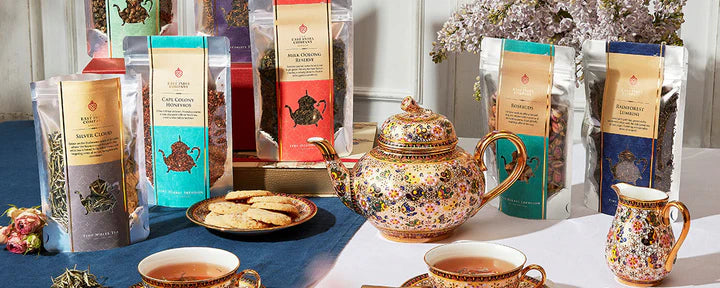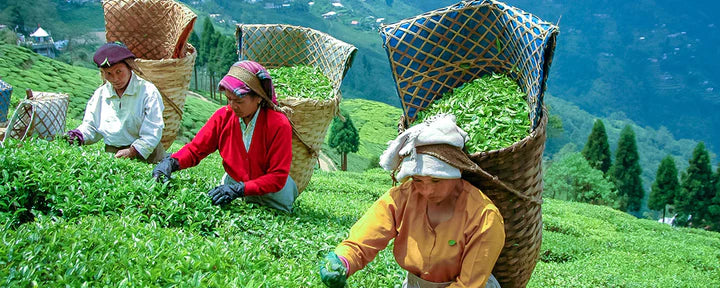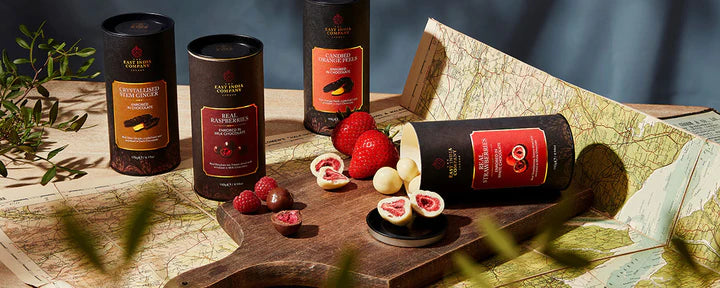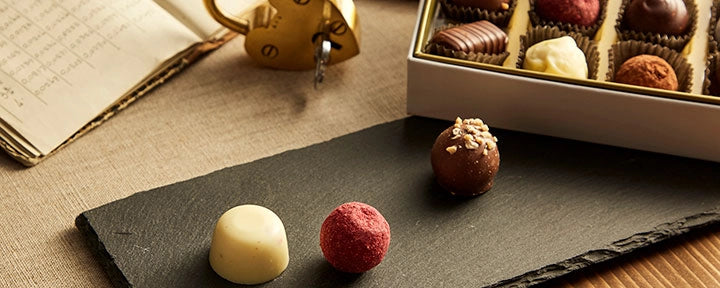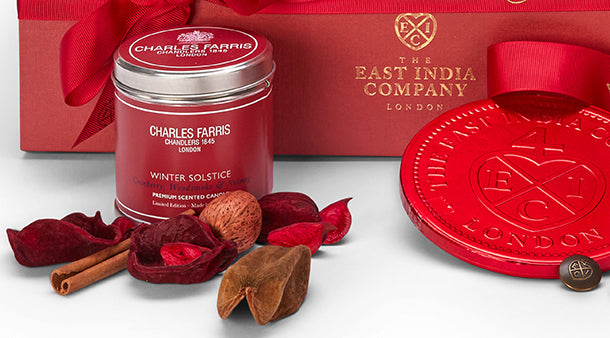3.5 billion.
That’s the number of pages returned today for a Google search of The East India Company. It’s also approximately the number of people in the world who know the name.
Countless books, articles, TV shows and movies have been written and made about The East India Company. Why? Because it’s a rollercoaster story like no other.
It’s a story about people.
From the ambitions of the young men seeking their fortunes in honest trade in exotic new lands, to those committed to delivering positive lasting legacies. But it’s also about the ambitions, greed, and transgressions of some that ultimately brought the downfall of The East India Company.
Tempting? Here’s a 15-minute read to whet your appetite. Pop the kettle on, make your favourite brew…
The Royal Charter
Queen Elizabeth I signed The East India Company's Charter on New Year's Eve in 1600. Little did she know that The East India Company [we’ll call it EIC now for short] was to become the driving force behind British economic development for over two hundred and fifty years.
At times EIC’s revenues would exceed those of the Crown itself, and its achievements would become the very fabric of British history.
In fact, were it not for the exploits of EIC, there would likely neither have been a British Empire nor the resulting Commonwealth; English would not be the lingua franca of the world and tea would not be the most common beverage (after water).
Starting Up
Without the entrepreneurial spirit of the 250 merchants, knights, gentlemen and yeomen who put up the £68,373 [in today’s money £2m] required to finance the first voyage to the 'East Indies' by what became the forerunner of the modern joint stock company, Britain might have remained the third rate European power it was at the time, whilst other nations with their vast resources, such as the Spanish and the French, or with commercial resourcefulness like the Dutch, would continue to divide up the global trade they had already established.
The initial target of EIC was the lucrative spice trade with the East Indies, then the virtual monopoly of the Dutch. Although the first voyages were highly profitable, the competition was intense and EIC’s officers looked for trading alliances with the relatively unknown ‘Mogul’ India.
The treaty obtained in 1618 from the Emperor Jehangir opened the ports of India to trade, and by the end of the century, EIC’s influence had spread throughout most of India. The French threat in the next century was successfully countered by Robert Clive, who was the first Company officer to ally territorial conquest to the defense of the Company's trading interests.
The foundations of the British in India were laid.
The Piece Trade
In the seventeenth century the backbone of EIC’s activities was in fact the "piece trade" – the trade in [pieces of] silk, cotton fabrics and batiks, Chintz and Chinoiserie, often not from India itself but from those areas where the Dutch held sway in East Asia. EIC’s attempts to export English woollens in return were unsuccessful however, and it was only collecting taxes in India that gave EIC the silver with which to trade with that most closed of nations, China.
All the tea in China
The object of the trade with China became synonymous with EIC - tea.
Ever since Charles II married Catherine of Braganza, bringing as her dowry the port of Bombay [now Mumbai] and an insatiable appetite for tea, the British acquired a taste for what is now its national drink. The sole source of that tea was China, and its trade became one of the main sources of revenue for EIC.
With it came the development of the "East Indiaman" sailing fleet which evolved into "tea clippers" in the race for tea.
And the meeting place for ship owners and merchants to exchange news and information concerning the ships was a coffee house named Lloyds: the infant marine insurance trade that developed there eventually became the world's largest insurance company - The Lloyds building is built on the site of the one-time headquarters of The East India Company.
To America
The impact of tea to The Company had always been dramatic and was sometimes disastrous. The infamous Boston Tea Party was a direct result of the Tea Act of 1773, where Parliament authorized the financially-distressed Company’s surplus taxable tea stocks to be sold to the Colonies. Crates of black and green tea were unceremoniously dumped into the sea by the Americans who objected to EIC imposing tax on its import.
The relationship of The Company with North America improved however, because of Elihu Yale, a second generation American who had become Governor of Madras in EIC’s service and was later well known for his continuing generosity to the university given his name.
One lump or two
Along with the consumption of tea, the British public developed a taste for sugar in their tea. Vast sugarcane plantations were established in the islands which came to be known as the West Indies. England became the largest sugar trading country in the world. With sugar plantations came the evil of slavery. By the early 1800s there was an upsurge in anti-slavery activism, interestingly, EIC took a strong moral position against West Indian or ‘slave’ sugar and advertised “East India Sugar, made by Free People”, sourcing their sugar from India. Of course, the reality was that, although not enslaved, agricultural workers in India producing the sugar did so in labour conditions that were far than ideal.
Ethical sourcing in tea for the modern day EIC and other reputable tea companies remains a key priority.
China from China
The need for enormous quantities of ballast for the ships on the return journey to London from China led to the trade in porcelain and fine bone china which became highly fashionable in the well-to-do English households. The desire for Japanese lacquer work in furniture and rattan furniture from the East Indies made for a busy sea trade.
The Piece Trade flips around
The controversy over the using scarce silver bullion to finance imports had plagued EIC since its early days. The development of the international trade generated, led to an increasing sophistication in economic thinking in Government. EIC tried to assuage any criticism by seeking export markets for British products.
Now the Chinese and Japanese regarded westerners in general and their technology in particular, with disdain. And in India, the British trade in wool was hardly likely to find a market given the local plethora of far more sophisticated fabrics.
The problem was exacerbated by the growth in the import of calico - unbleached cotton fabric - from India, which threatened the wool manufacturers' home trade. A short-lived problem, as the Industrial Revolution in the North of England changed everything. Soon EIC’s Indian ‘possessions’ became one of the main markets for the cheap finished cotton fabrics of the Lancashire mills - ironically of course, created from Indian-grown cotton!
Fuelled by Alcohol
As EIC established itself in the sub-continent, great wealth accompanied it - or more accurately, great wealth transferred from East to West.
The British became voracious consumers of luxury goods from Europe. First amongst these was liquor: whether in the form of claret, port or Madeira, the Officers of EIC were notorious for their capacity [the original Brits abroad] and frequently aroused the wrath of the Court of Directors back in London, who perhaps failed to understand the alcohol-easing challenges of climate and exotic disease suffered by their employees in India and beyond.
Of course, some of these liquors found their way back to England, and "East India" Port, Sherry, and Gin carried a certain caché from the allegedly beneficial effects of the round trip to the East.
Meanwhile brewers in Britain started to make ales specially suited to the rigours of the voyage and the heat of the colonies. "India Pale Ale" was born. In the nineteenth century the preventative effects of quinine were discovered by EIC officers, and “Indian Tonic Water” was developed as a means of warding off malaria. Bitter tasting, the medicine went down better with a slug of gin. ‘Ice and a slice’ followed and the Gin & Tonic was born, thanks to EIC. The colonies developed a host of gin-based cocktails, still favoured today.
The Journey from Trade to Conquest
Stepping back and looking at the big picture for a moment, EIC’s desire to seek out new trading markets gave the greatest impetus to English seafaring, which until then had been backward compared to the activities of the Portuguese, Spanish and Dutch.
Francis Drake's circumnavigation of the globe in 1577 had come 50 years after Magellan first completed the voyage, funded by Spain. Drake's mission had two aims, which were typical of the English naval policy of the time: he was required to find "Beach" (Australia!), which he failed to do; and he was tasked with causing as much trouble as possible to the Spanish, which he did very well [The Spanish Armada].
With EIC’s trading activities, England grew from being a somewhat piratical naval power living off the pickings of other nations' trade [EIC even once employed Captain Kidd to protect their ships - sadly, it was more lucrative for gamekeeper to turn poacher] to become a sophisticated trading nation, of which the navy was the powerhouse: exploring, consolidating, transporting, defending.
Drake's "Golden Hind" weighed 100 tons: the aptly named good ship "Trades' Increase", commissioned by EIC in 1609, weighed 1,293 tons, the largest vessel ever to be built in England. The requirements for ocean-going ships led to the development of shipbuilding yards at Deptford, and as early as 1621, one in every two thousand of the population was employed by EIC [One day, incredibly, EIC would employ 1/3rd of the British workforce]. That the Navy become such a vital force in the future defense of the realm owed much to EIC.
The Dutch strength in the Spice Islands had meant that EIC tried to open trade with Japan, Siam [now Thailand] and Formosa [now Taiwan] as well as China. In Japan, an unholy rivalry had sprung up between Portuguese and Spanish Catholic missionaries, and the less devout English found themselves unexpectedly welcome, although subsequent competition with the Dutch proved intense.
Nevertheless, the foundations for EIC’s influence in East Asia were laid, and the economies of Hong Kong and Singapore (the latter founded by Company servant Sir Stamford Raffles in 1819), illustrate EIC’s modus operandi in the region - entrepreneurialism, not conquest.
However, India was altogether a different affair, and it was here that things turned a little darker.
A combination of formidable personalities and some good luck meant that EIC unintentionally found itself in possession of amounts of land, huge revenues, and a consequently necessary powerful army.
Throughout the development of the Raj, the Court of Directors in London (the Board), did try to remotely check the territorial ambitions of their servants in India, which they saw as a distraction from trade. But London was a long way away and for some, riches beckoned.
First amongst these entrepreneurial colonists was Robert Clive who as a young officer had distinguished himself in Southern India, vanquishing the French, and EIC’s trading post at Madras was permanently strengthened and control of the whole of the southeast coast of India was complete. Heading north, ‘Clive of India’ saw victory at the battle of Plassey in 1757 over the Nawab of Bengal and his French allies, giving EIC control of all Bengal, adding the state revenues to EIC’s trading revenues. This was the pattern for territorial conquest and tax collecting which was followed by EIC’s officers in India for the next hundred years. Clive himself became the richest man in England as a result.
Not all were like Clive. Warren Hastings who was the first Governor of Bengal [at Fort William], passionately believed in his responsibility to the people that EIC governed. Alongside other remarkable men - Bentinck, the Lawrences, the Edwardes - he had a vision of service to India rather than personal gain.
The results of their vision were incredible lasting positive legacies: The Indian Civil Service; the Constitution; the rail system; a common language; leading educational and scientific institutions. All direct results of the efforts of The Company's administration and the dedication of these men and others.
Consider for one moment: they ruled over one fifth of the world's entire population.
The End
The Indian Mutiny, tellingly known as The First War of Independence by the people of India, broke out in 1857 and signaled the end of EIC’s rule in India. It was no longer acceptable for a business, however permitted by law, to be running a country, particularly one so important to the Crown.
‘Nationalizing’ EIC had been slowly taking place for nearly a hundred years, with powers gradually being removed, but it was concluded with the passing of the India Act of 1858.
EIC gave to the Crown its trading links in all continents, its navy army, even its own currency as well as a range of territories as diverse as the tiny South Atlantic Island of St. Helena. And the "Jewel in the Crown" - India itself.
Commenting on EIC, The Times of London wrote that "It accomplished a work such as in the whole history of the human race no other company has attempted and is ever likely to attempt in the years to come."
It was written on 9th November 1873, the day EIC was dissolved, and Queen Victoria and her Government took over the affairs of EIC, the Queen herself becoming Empress of India.
A New Beginning
131 years or approximately 48,000 days later, Sanjiv Mehta, an entrepreneur and pioneer in the spirit of the original East India men - like them a merchant and trader but unlike them, an Indian from Mumbai - bought and brought The East India Company back to life. A man with a glint in his eye for the opportunity for The East India Company to trade once more.
Truly unique, the modern EIC is a brand-new company - reborn and renewed - but with a history like no other….
----
Tea Break over, back to work. If you have enjoyed, do share the link with a friend. If you have questions, ask us. You’ll find lots more stories for the curious amongst you, on our new website.
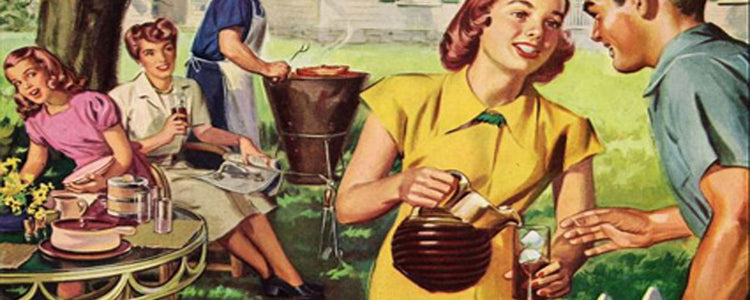
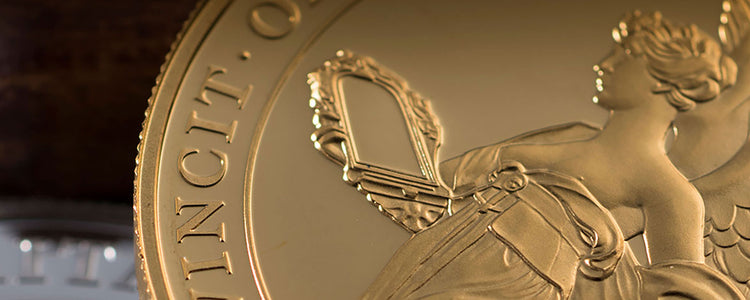
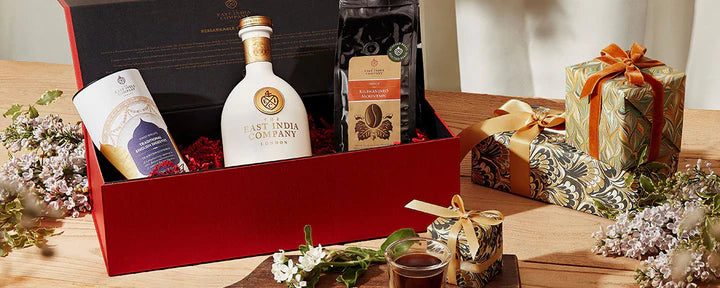
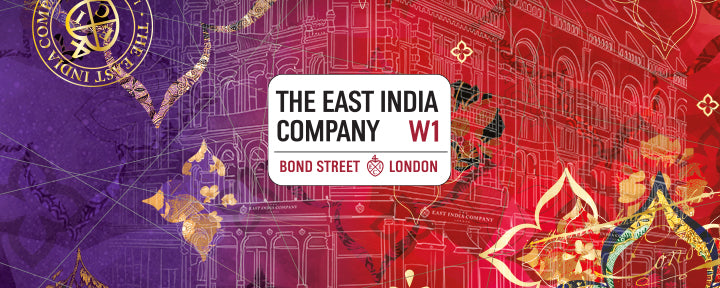
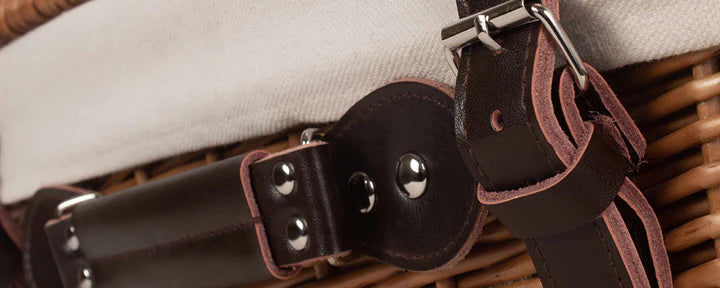
 Ceylon / Sri Lanka
Ceylon / Sri Lanka Assam, India
Assam, India Japan
Japan Taiwan
Taiwan Nepal
Nepal China
China Kenya
Kenya Egypt
Egypt Iran
Iran South Africa
South Africa